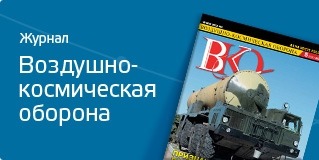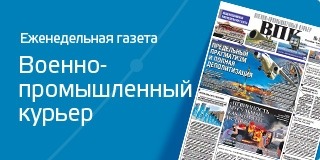The panel discussion on "The conditions, problems and prospects of the development of Aerospace Defense Forces" was held in the State Duma of the Russian Federation.
September 27, 2013 the panel discussion on "The condition, problems and prospects of the development of Aerospace Defense Forces" was held in the State Duma of the Russian Federation. The meeting was chaired by the member of the State Duma’s Committee on Defense, Vyacheslav Tetekin. The members of the Non-Departmental Advisory Board on Aerospace Defense - Head of the Air Defense Missile Forces of the Air Force (2000-2008), Lieutenant-General Alexander Y. Gorkov, the Commander of the Air Defense (1977-1987), Colonel-General, Honorable Military Aviator of the USSR, Candidate of Military Sciences Nikolai I. Moskvitelev tool part in the panel discussion.
Alexander Y. GORKOV
Administrative dead end
How Yugoslavia was destroyed
For Russia, the problem of creating the aerospace defense system now comes out on top. The experience, lessons and findings from the use of air defense forces and facilities in local conflicts can tell about it.
Let’s take Yugoslavia, for example, and the operation "Allied Force". It had been prepared for a year. Weapons and military equipment with high combat capabilities were used: navigation system, designation equipment procuring work in any weather conditions, day and night, sophisticated systems of intelligence, control and communications, airborne electronic suppression stations, laser systems, high-accuracy destruction and control means.
The main purpose of the operation, planned in two phases, was to destroy the military-economic potential of Yugoslavia. During the first phase the destruction of the air defense systems, communications centers and command posts, control points were supposed and it had been done. During the second phase striking against force grouping, ammunition, material depots, telecommunications centers and enterprises of the military-economic industry should be done. 14 NATO nations took part in the creation of the force grouping.
The Air Force grouping initially included about 400 airplanes, but then their number reached nearly 700. Strategic aviation (B-1, B-2, B-52) had 25 battle units, tactical aviation (F-111 , F-116, "Tornado" , "Jaguar ", "Harrier", " Mirage", A-10) had 550 battle units, ship-based aviation - 100 battle units, strategic and tactical reconnaissance aviation - 15 battle units, the systems "AWACS", " GStar" - 30. So it was really a powerful aviation grouping.
The naval forces numbered 64 warships carrying cruise missiles, three nuclear submarines and four surface ships of the U.S. Navy.
The ground forces were presented by the NATO peacekeeping forces in the neighboring countries, which had been removed from the control of the UN and were used for its intended purpose.
The reconnaissance assets played the particular role. For that purpose the aircrafts of electronic reconnaissance P -135, the U-2, unmanned aircrafts were depreserved. The main role was played by the tactical warning and control aircrafts "AWACS", the intelligence and attack control aircrafts of the systems "GStar", space systems. In fact, such clusters were tested as the airplanes "AWACS", "GStar " and the airplanes of electronic intelligence, which allowed to conduct general reconnaissance and to direct guided weapons from fighter-bomber aircrafts, aircrafts of electronic reconnaissance P-135 - F-16 - to suppress radar detection, and others.
More than 50 airspace vehicles and 15-20 types of the systems "Lacrosse" - for radar, imagery, weather reconnaissance, navigation and communication, were used in order to conduct the operation.
What could the armed forces of Yugoslavia, in particular the air defense system, oppose against it? The air defense system was organized by the area-based principle. There were eight air missile defense brigades equipped with the systems S-75, S-125 from of the previous fleet of the 1960s. There were three aviation regiments equipped with the aircrafts of the Fishbed-N type (62 units), two aviation brigades of fighter-bombers with 54 Fishbed-N aircrafts and aircrafts of other modifications. There were over 1,000 man-portable air defense systems, organized in the air defense corps.
The continuous radar field was created with acquisition horizon from one to two kilometers. The low-altitude field at 100-200 meters was formed only in the area of the most important sites.
As a result, the combined forces of NATO performed more than 30,000 air missions during the operation (2-2.5 months). 870 cruise missiles, including 790 sea-based units, about 80 air-based units, were launched. Within 78 days of the operation 498 sites (55 percent were military facilities) in Yugoslavia had been attacked.
The NATO lost seven combat aircrafts, three helicopters, 11 unmanned aircrafts, about 20 cruise missiles. The efficiency of the air defense system appeared to be so low.
Yugoslavia lost 70 combat aircraft. Four of the nine airfields had been completely destroyed. 40 of the 98 aircraft shelters had been destroyed and 30 had been knocked out of action.
Nine of the 32 air defense missiles lines had been destroyed. As well as about 40 percent of the air defense missiles means that were attracted to conduct air defense battles. But it saved the ground forces.
More than 200 military and industrial facilities had been destroyed. The compound damage of Yugoslavia was from 100 to 120 billion dollars.
The political results: the main goal had been achieved - the disintegration of Yugoslavia and the disappearance of this state from the political map of the world. For the first time the coercive intervention without UN Security Council sanctions had been realized what we can see now over the course of the threats to Syria. The domination of the U.S.A and NATO in the Balkans had been recognized. The dangerous precedent for arbitrary application of the military force by the West against sovereign states had been created.
The military results: the possibility of achieving the strategic objectives of the local war without invasion of ground grouping had been tested. The priority had been given to the Air and Naval Forces. The trends of the widespread use of precision weapons and advanced means of destruction had been fixed. The scale of the development of information warfare’s forms and methods as well as wide multiuse of land-, sea-, air- and space-based forces and means had been expanded.
Lessons for Russia
What could expect our country in such situation and what kind of the aerospace defense of the Russian Federation we would like to have? These are very important questions.
In December 2011, in accordance with the presidential decree the Aerospace Defense Troops were created. The responsibility for the organization and execution of the ASD tasks in the Armed Forces in peacetime and for missile cover of the Central (I want to emphasize it) Industrial Region of the Russian Federation was places on the Commander. Three brigades of the Ballistic Missile Defense are included in the ASD Troops.
In October 2012, the range of tasks imposed on the ASD Troops was expanded. Among them there are the organization of the aerospace defense not only in the Central Industrial Region, the development of plans of the Russia’s ASD system, a number of measures to improve the ASD system, the formation of the integrated military-technical policy, the organization and development of proposals to improve the regulatory framework in the field of aerospace defense.
In addition, the ASD of the Russian Federation are entrusted to participate in the strategic deterrence, in the struggle against the aerospace attack weapon during local military conflicts, in the protection of the state borders in the air, in the control of the ASD use.
To solve these problems the ASD system includes the subsystem of intelligence and aerospace warning, the subsystem of destruction, suppression of aerospace attack weapon and the subsystem of overall support and management.
The subsystem of intelligence and aerospace warning is to contribute to solving problems on the ground, at sea, in space, in the air on the basis of the modern and independent intelligence and information technology and systems.
The subsystem of destruction and suppression is the totality of anti-missile, anti-space, aviation and air defense missile groupings and forces of electromagnetic warfare (EW) for destruction of enemy’s aerospace attack weapon (ASAW) and it will include space-based, air-based, ground-based, sea-based weapon.
The functions of the management subsystem come out of the abovementioned - this is the possibility to control all subordinate forces and facilities, including multiple-type and multi-service ones.
Today the subsystem of material and technical support is only in a formative stage, though the presidential decree on the establishment of ASD Troops with its functionality and tasks has been signed two years ago. The General Staff, the main military authorities give serious attention to the construction of the aerospace defense system, which is confirmed by a number of scientific conferences, meetings and field training exercises. But the results, unfortunately, doesn’t settle the ASD problems. The present posture of affairs sticks the ASD military authorities, casts the whole situation in the state of uncertainty.
It must follows that up to now there is still no common understanding in building the Russian ASD system on the part of the command both the Air Force and the ASD Troop (two very important structures of the strategic military of leadership). On this complicated subject a crucial role should be played by the top military and political authorities of the country, as we have said repeatedly, and by the General Staff of the Armed Forces. And they should take into account the developments of scientific research institutes, universities of the RF Armed Forces, Military Scientific Committee of the RF General Staff, and the other structures of the military department.
According to our reckoning, the main criterion should be the ability of the troops to fulfill the mission, and among the other things - in the forms and the structure, which are considered by the military authorities. It must be admitted that at present neither the Air Force nor the ASD Forces are able to carry out the whole range of the tasks defined by these regulatory documents. And here's why.
There is a gap in the ASD deployed forces along the operations air and strategic lines for the effective holding off an aerospace attack and target coverage. And there is the different subordination of the ASD Forces on grounds of territory, service and branch (military district, the Main Command of the Air Force, the ASD Command and so on).
There are such problems as insufficiency of the modern highly effective weapons and military equipment and considerable time necessary for ground, sea and air forces redeployments, as well as for large-scale events of logistical, technical and operational support. Thus, radio and electronic intelligence is not visible in the system of intelligence and aerospace warning.
There was time when Air Defense Forces Commander had at his disposal structures and forces that were engaged in the conduct of operational and strategic intelligence. Air Defense Forces Commander knew every second, minute the condition of the troops of our potential enemy. For instance, the B-52 is taking off from the U.S. military base on the island of Guam, and the spy plane "Orion" is loitering near our northern borders. We have no such possibilities today, unfortunately.
Therefore, it’s necessary to solve these problems together with the Chief Intelligence Directorate of the General Staff and to incorporate the warning subsystem into the system of the aerospace defense.
It is vital to revive the electronic warfare (EW) in the system of suppression and destruction. There was time in the 80s when we considered EW capabilities not only for suppression of the air defense systems, jamming countermeasures for aviation. EW forces could create serious problems for the cruise missile flight by means of the effects on its onboard elements. For example, the effects on the work of the height sensing device made the cruise missile fly not at a height of 50-60 meters but up to 150-200 meters along the flight line, where it is much easier to fight with such air targets.
Today the role and place of the aerospace defense aviation, in particular, its structure, methods of control, interaction with other forces, are not defined. But it was the key issue in the military conflicts of the XX century; it remains important in the twenty-first century.
Earlier the air defense formations were the main bodies providing and organizing the interaction of the air forces branches. We believe it is necessary for this purpose to reactivate the formations of the aerospace defense.
Currently the responsible for the aerospace defense is held by the Commander of the Aerospace Defense Troops. However, a significant part of the ASD forces is subordinate to the commanders of the military districts, and it doesn’t help to solve the tasks of the effective construction the ASD system of Russia.
And what is the most important: the Air Force Command does not have its own command control center. In the Air Force there is no command center, where the battle staff of the Air Force Command should be. Commander in Chief, his deputies, directors, commanders of the branches, services, departments - they have no command control centers. Though there is a deputy commander on the air defense in the structure of the High Command of the Air Force. These structures are situated, as the saying is, in our old stocks, in particular in Moscow region, they have their offices and phones, but no command center. It’s a violation of the unity of command and subordination, and what is more - responsibility.
It’s efficient to create the integrated ASD systems of the country along with the implementation of the principles of shared responsibility, one-man command and centralized automated (and in some isolated cases - automatic control of all forces and facilities) integrated information control network. We elaborated these questions in our time, as well as the creation of local zones (battle-field, district, regional), where there will be either a threat or conduct of operations with the operational control of the aerospace defense forces by corresponding commanding officers (a commander-in-chief).
Thus, the final face of the ASD Troops can be either as the service component of the Armed Forces or as the strategic command of the aerospace defense. Both should be self-sufficient with regard to all ASD subsystems and to include the major arms: ASD aviation, air defense, radio-radar of the missile ballistic defense troops, intelligence forces, EW, operational, combat, logistic and technical support. All this should be in the single line of strategic, operational, tactical and command control.
The separate issue is recreating the ASD scientific basis at the modern level. It’s necessary to link logically the tasks and interaction between the research institutes, industry cooperation, and universities in creation of weapons systems, in decision of military scientific and technical problems. As for now, the situation is like that: there is sometimes no clear understanding between the customer, represented by the Defense Ministry, and the contractors of the state defense order - military research institutes and enterprises. It’s good that at least we managed to save the ASD Military Academy in Tver.
The conclusion is: the construction and the development of the ASD system must be not only the priority for the Armed Forces, but it also should have the national importance. It means that all the associated problems should be solved in the near future at the highest level of the military state management.


